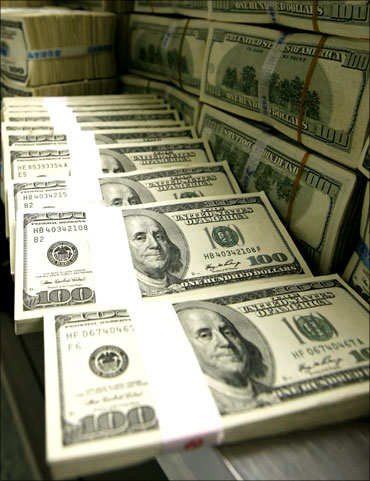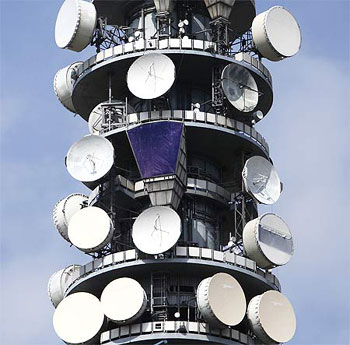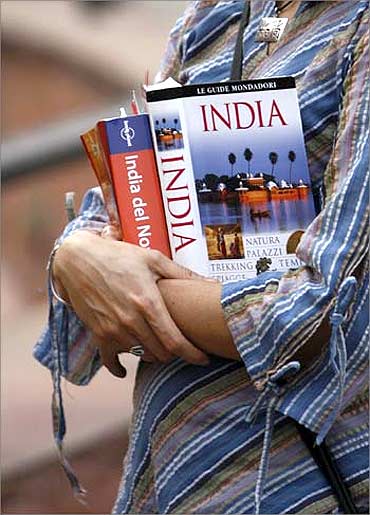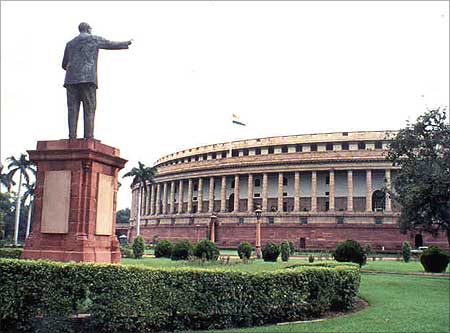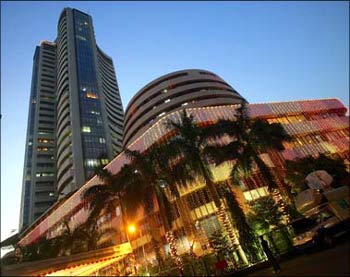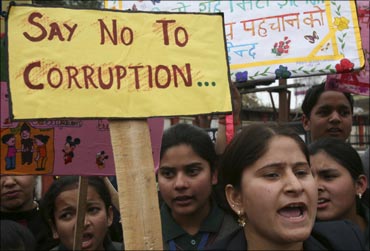 | « Back to article | Print this article |
20 years on, LPG stands for loot, plunder, goonda-raj
It was exactly twenty years ago when the then finance minister Manmohan Singh presented his first Budget in the Parliament on July 24, 1991.
Quoting Victor Hugo, he said: "No power on earth can stop an idea whose time has come. I suggest to this august House that the emergence of India as a major economic power in the world happens to be one such idea. Let the whole world hear it loud and clear. India is now wide awake. We shall prevail. We shall overcome."
Never in the history of post-Independent India did a speech have as much electrifying effect on the nation, with perhaps the sole exception of the 'Tryst with Destiny' speech of Pandit Nehru.
After all, if Nehru's speech signalled political independence from the British, Manmohan Singh's Budget speech signalled economic independence for us.
Click NEXT to read on . . .
20 years on, LPG stands for loot, plunder, goonda-raj
It may be recalled that the original LPG model -- License, Permit and Government Quota Raj -- that nixed Indian entrepreneurship and initiative in the bud. That is what precisely the British had done to us till 1947. Post-1947, we gladly did it to ourselves.
New laws were introduced or some of the British vintage followed and that effectively stymied the Indian industry. The net effect was glorification of poverty and simultaneously ridiculing creation of wealth by the society.
To be poor and be mired in poverty was glorious in those times. We patented the right to distribute poverty, not wealth. All this was inexplicable in a country which traditionally venerated Lakshmi, the goddess of wealth.
Naturally, Indian business could not survive the twin onslaught of the intellectual perversity, resulting in the abuse of the very idea of profits, and the naked aggression of the system, even post-Independence, against Indian business itself.
Click NEXT to read on . . .
20 years on, LPG stands for loot, plunder, goonda-raj
Hence, anyone who was rich and, more importantly, ran a profitable business, was definitely a law-breaker! Else, how could he have become rich in the first place?
The unspoken argument was that with a policy which was so blatantly anti-business, there was not even a theoretical chance of anyone running a business legally as well as profitably!
And then came Manmohan Singh
The disastrous consequence of following this demented economic model has been chronicled by several authors several times over. Of course, that does not warrant a repetition here.
It is given this paradigm that the original LPG model was sought to be transformed by Manmohan Singh into a newer LPG model -- one that Liberalised, Privatised and Globalised the Indian economy.
Click NEXT to read on . . .
20 years on, LPG stands for loot, plunder, goonda-raj
Socialist ideologues who threatened to set the Ganges on fire to protect socialism, watched silently as the nation jettisoned socialism.
Dominant deformers of the Indian economy acquired a new sobriquet -- radical reformers. Reforms, it may be noted necessitate deformation in the first place!
Significantly, socialism, by the next decade, was buried fathoms deep and was left all alone in one obscure corner, viz., the Preamble of the Indian Constitution.
Budget 1991 sought to bring about tectonic changes to the assumption that governed our national economics till then. Technology, production, profits, exports, and legitimate wealth accumulation were instantly acceptable expressions in the Indian economic lexicon. The operative word here is 'legitimate'.
Consequently, Indian enterprise, after decades of being strangulated by the government, relished at these changes.
Click NEXT to read on . . .
20 years on, LPG stands for loot, plunder, goonda-raj
Indians, thanks to a more realistic exchange rate mechanism, began exploring global markets. Some imported newer technology to meet global demand. Tax regimes were rationalised.
Further, Indians could now exploit economies of scale and thereby become competitive even at the global level.
Investment policies were liberalised to allow foreign direct investment (FDI) as well as foreign institutional investor (FII) funds into the national economy.
That is not all. India is seen as an emerging political as well as economic powerhouse. India, that was hyphenated with Pakistan till recently, is now hyphenated with Brazil, Russia, China and South Africa (BRICS countries).
In a few years from now, it is quite possible that India would become the third largest economy in the entire world, and by 2050 we could well overtake the United States and become the second largest economy in the world.
Click NEXT to read on . . .
20 years on, LPG stands for loot, plunder, goonda-raj
What makes the Indian growth story compelling is that it will probably be funded internally with very little dependence on foreign capital.
Once we have capital, technology will follow. In fact, in a paper, Goldman Sachs has demonstrated how Indian domestic savings will completely fund Indian infrastructural requirement and possibly global growth in the next decade or so.
But there is another side to this growth story. India, it may be recalled, saves in excess of 35 per cent of its GDP and invests approximately 36 per cent of its GDP.
The difference -- say, 1 per cent of our GDP -- is the capital that is routed from abroad as foreign capital. Interestingly, a significant portion of this 1 per cent of foreign capital 'originates' from Mauritius -- for obvious reasons.
Click NEXT to read on . . .
20 years on, LPG stands for loot, plunder, goonda-raj
Needless to emphasise, several experts say that this money is basically illicit wealth generated in India, routed to Mauritius through the hawala route and reinvested into India as either FII funds or FDI.
As someone put it, FII in the Indian context could very well mean Foreign Indirect Investment.
But this is not a simple case of tax evasion: hawala and re-routing investments into India through the Mauritius. There is a psychological as well as a sinister angle to this issue.
A mere per cent or two of foreign capital has come about to dominate approximately 99 per cent of our public debate. A classical case of tail wagging the dog!
Click NEXT to read on . . .
20 years on, LPG stands for loot, plunder, goonda-raj
Have we lost the plot?
But the psychological impact of this skewed debate on the national economics is so profound that most Indians -- especially youngsters -- believe that it is foreign capital and foreign capital alone that drives our economy.
If the assumption that the Indian government could build India was flawed till 1991, the belief that India will be built through foreign capital or external initiative is equally flawed since 1991.
After all, adoption of the new economic policies was a knee-jerk reaction to the foreign exchange crisis of 1991. It was not a well thought out plan. Surely the nation was underprepared, if not unprepared.
Contrary to popular belief that liberalisation of the economy would prevent corruption, the deepening of the reforms process since the early 1990s is seen as having increased the opportunities for corruption.
Click NEXT to read on . . .
20 years on, LPG stands for loot, plunder, goonda-raj
The emergence of globalised corporations with huge financial and political powers disproportionate to the power of our local governments, manned by people without adequate preparation to handle the situation, has provided an impetus for a very high level of corruption.
Nothing illustrates this paradigm better than the demise of the omnipotent telephone linesman of the pre-reforms era.
A telephone connection in those times was a luxury. Crucially, only those who could afford to 'maintain' the local telephone linesman would apply for a telephone connection in the first place.
The new economic policy -- and thanks to the competition it brought about -- eliminated the telephone linesman and the petty corruption associated with him.
Click NEXT to read on . . .
20 years on, LPG stands for loot, plunder, goonda-raj
But in his stead, we have the minister who loots us of billions of dollars, openly, brazenly and fearlessly. The telephone linesman is dead. But his minister is alive and kicking.
What needs to be appreciated here is that reforms run the risks of being dynamited from within by the 'reformist' cabal consisting -- as the former chief vigilance commissioner N Vittal put it -- Neta (leader), Lala (businessmen), Dada (underworld), Babu (bureaucracy) and Jhola (sections of NGO and media).
Interestingly, more or less, it is this cabal that ushered in, designed and controlled socialism till 1991.
Modern Indian governance, if I may be permitted to state, is defined only by its ability to feed on the avarice for limitless wealth of this cabal.
Click NEXT to read on . . .
20 years on, LPG stands for loot, plunder, goonda-raj
Worse still, all this is rationalised as the inevitable negative consequence of the reforms process -- even by the intelligentsia.
History of mankind and experiences of other countries suggest that a country can be built only through its informed citizenry. But we seem to be indulging in a weird experiment of suspending our initiative and waiting for deliverance from outside.
Our seeming fixation with the non-existent foreign investment to this date is a case in point. Its disproportionate importance is as much a sinister propaganda of this cabal as it is an ideological one.
The positive point about reforms is that it has kept Indians alive for the past two decades. The downside is that we are in a comatose stage. Positive or negative, your take is as good as mine.
Click NEXT to read on . . .
20 years on, LPG stands for loot, plunder, goonda-raj
That this debate on the subject is completely controlled by the ruling cabal in India makes it worse. It is difficult to provide contrarian view points, fresh thinking and newer ideas on the subject.
After all, the ruling cabal operates with a clear programme to stymie all possible efforts of Indians in nation-building while keeping them is a state of coma.
That explains why the ruling cabal continues with its loot of India. Reforms process has definitely degenerated into a newer form of LPG -- Loot, Plunder and Goonda-raj.
This is what happens when the people of a country are in a coma.
The author is a Chennai-based chartered accountant. Comments can be sent to mrv@mrv.net.in


